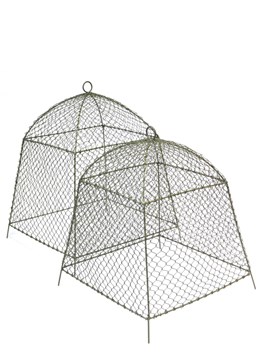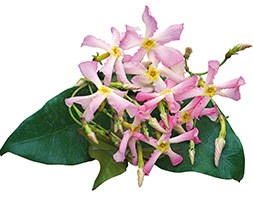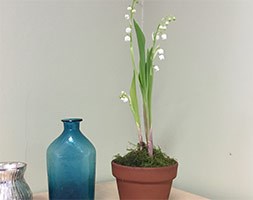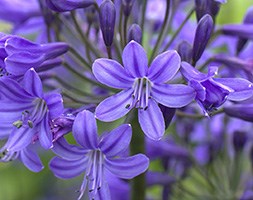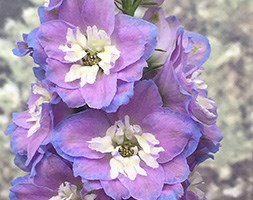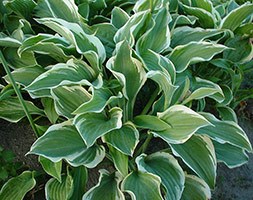New products at Crocus
by Sarah - February 17th, 2016.Filed under: Crocus, New Products.
Crocus just added these new items
Rabbit proof cloche £19.99
These very popular domed shaped wire cloches keep hungry deer, birds and rabbits off precious crops. In urban gardens they are useful for stopping the dog or cat trampling on your young plants. The 50mm spikes protruding from each corner can be pushed into the ground to help anchor the cloche in position. The ring on top is perfect for carrying them around the garden or to hang them in the shed when storing them. The two sizes of cloche can be used with the relevant extensions listed below to increase their height. Perfect for small fruit bushes. They are produced from a steel rod frame seamlessly woven with a wire mesh and powder coated. Dimensions: Small – height 44cm, base 40cm x 40cm Large – height 52cm, base 45cm x 45cm
Trachelospermum asiaticum ‘Pink Showers’ (pink Chinesse jasmine) £9.99
Position: full sun Soil: fertile, well-drained soil Rate of growth: average Flowering period: June to August Other features: very fragrant flowers Hardiness: frost hardy (needs winter protection) Brand new exclusive variety for 2016. Garden care: After flowering has finished prune back to fit the available space. In frost prone areas, grow in pots of loam-based potting compost, such as John Innes No2 and move to a frost-free spot in winter.
Scented lily of the valley in a terracotta pot ( Scented lily of the valley in a terracotta pot) £9.99
Position: partial or full shade Soil: leafy, fertile, humus-rich, moist soil Rate of growth: average to fast-growing Hardiness: fully hardy Everybody loves these plants for their creamy white bell-shaped flowers. They have a deliciously sweet perfume so are often used in the production of perfumes, and are popular with florists as they make very sweet posies. Traditionally grown as groundcover in shadier areas of the garden, these have been potted up into 9cm terracotta pots, so they make a really pretty gift. They can be kept in the house and enjoyed while in flower, but then it should be planted outside where they will gradually spread to form a generous clump. When grown outside, they tend to flower in late spring and early summer, but these have been grown on under glass, so they will generally flower earlier than they normally would. It is worth keeping in mind that these are sent out in growth, but not in flower, so you (or the recipient if they are bought as a gift) will get the pleasure of watching them grow. Home care: Keep them well watered while the plants are actively growing, feeding with a balanced liquid fertiliser at regular intervals. After they have finished flowering, plant them outside in a shady spot with moist, humus-rich and water them throughout the summer. They do die back in autumn, but will pop back up again the following spring and will spread to form a carpet of lustrous foliage and fragrant flowers.
Agapanthus ‘Inkspots’ (African lily) £7.99
Position: full sun Soil: fertile, moist, well-drained soil (or John Innes no. 3 compost for containers) Rate of growth: average Flowering period: July – August Flower colour: blue Other features: excellent as cut flowers Hardiness: frost hardy (may need protection in winter) A free flowering deciduous form with mid blue flowers that are held in open clusters on top of tall, dark green stems that have a gark sheen. It looks right at home in a Mediterranean style planting scheme, and will thrive in pots and containers. Invaluable for providing late summer interest. Garden care: Apply a balanced liquid fertiliser throughout the growing season. Towards the end of September ease back on the watering and feeding of plants in containers to allow the foliage to toughen up. Keep reasonably dry during the winter and protect the crowns with a dry mulch in the autumn. Divide plants that have become too big in spring, but remember you will often get more flowers when the roots are constricted.
Delphinium ‘Cameliard Group’ (delphinium) £6.99
Majestic, deep purple flowers, with frilly, pale blue margins and creamy- white eyes in June and July and deeply lobed, mid-green leaves. These beautiful, bi-coloured delphiniums look excellent towards the back of a sunny, well-drained border. One of the tallest varieties, it’s essential to stake the stems in mid-spring well before the flowers appear. Position: full sun Soil: fertile, well-drained soil Rate of growth: average Flowering period: June and July Flower colour: deep purple Other features: all parts of the plant may cause severe discomfort if ingested; contact with the sap may cause skin irritation Hardiness: fully hardy Garden care: Stake with bamboo canes in mid-spring. During the growing season apply a balanced liquid fertiliser every 2-3 weeks and wearing gloves cut back the faded flower-stems to a flowering side- shoot. At the end of autumn cut back and compost the faded flower stems Goes well with: Achillea filipendulina ‘Cloth of Gold’, Veronicastrum virginicum f. album, Echinops ritro, Foeniculum vulgare ‘Purpureum’, Aster frikartii ‘Monch’, Linum perenne ‘Blau Saphir’
Hosta ‘Regal Splendor’ (plantain lily) £6.99
Position: partial or full shade Soil: fertile, moist, well-drained soil Rate of growth: average Flowering period: July and August Hardiness: fully hardy This impressive shade-loving perennial forms a large (75cm high) urn-shaped mound of wavy-edged grey-green leaves, each of which is framed with an irregular yellowish margin that becomes creamier over time. In mid- to late summer, tall stems rise above, bearing spikes of bell-shaped pale lavender-pink flowers. It’s wonderful in a woodland setting where it associates really well with ferns. Garden care: You’ll get thicker, lusher leaves if you give your hostas a really good feed. An annual mulch in spring or autumn will help to keep the weeds down and is an easy way to improve soil and boost nutrient levels. Add a generous mulch of about 5-10cm (2-4in) deep of garden compost or leaf mould around the plant. Spraying the leaves regularly with a high nitrogen fertiliser during the growing season will also help to boost leaf size. Slugs and snails love hostas, so you will need to protect against them. Use an organic nematode treatment in early spring to ward off slugs. Or simply stick to planting it in a container.







